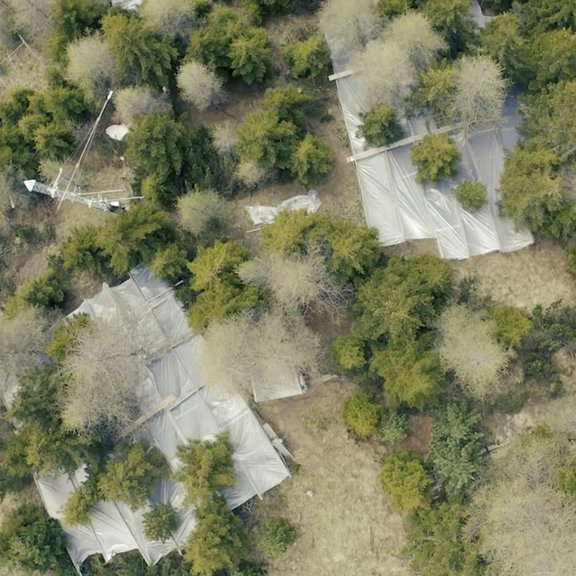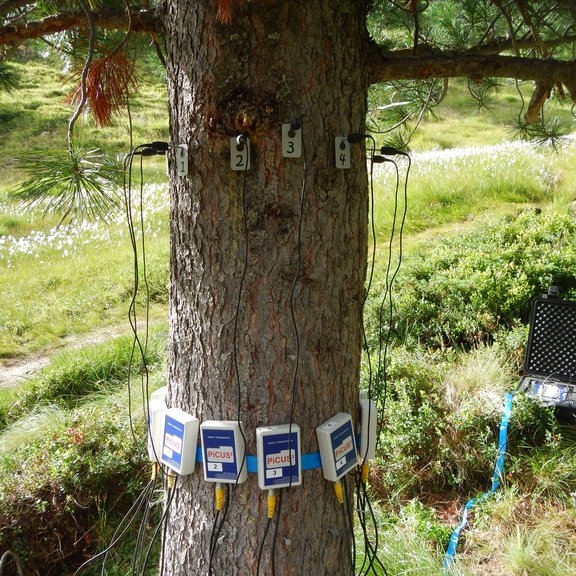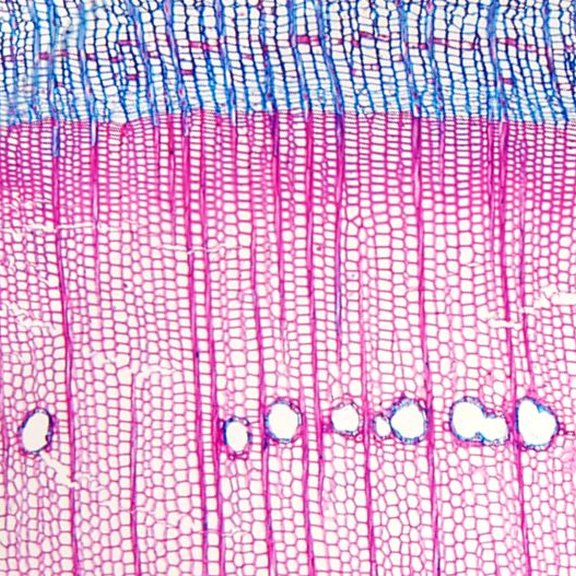Project
Legacy effects after summer and winter drought: Conifer hydraulics at the timberline
Project leader: Stefan Mayr, Michael Bahn
Project members: Andreas Bär, Florian Oberleitner, Andrew Giunta, Akira Yoshikaw
Funding: FWF
Duration: 2019-2023
Plant water transport is crucial under increasing drought, as expected due to climate change. Drought and freeze-thaw events can impair the transport of water from roots to leaves and cause shoot or even tree dieback. Plants try to avoid this by reducing transpiration or by investing in resistant wood structures. Some species can also repair the water transport system based on the formation of new wood (xylem) or on refilling of dysfunctional conduits. Trees at the timberline were demonstrated to be exposed to extreme impairments of the water transport system during winter and to survive by repair mechanisms. However, knowledge of combined stress effects, counter strategies and legacy effects, spatial hydraulic and stress patterns within trees and of the effects of different stress intensities on tree water transport are still poor. The project will focus on timberline tree species and the following topics:
A. Effects of summer and winter stress: We hypothesize that combined summer drought and winter stress cause increased vulnerability and damage of the water transport system, and, despite repair mechanisms, legacy effects in water transport and growth. B. Xylem hydraulic architecture and hydraulic patterns: We hypothesize that timberline trees show pronounced hydraulic patterns within trees with high hydraulic conductivity and high vulnerability of the water transport system in bole and roots. C. Effects of stress duration and intensity: We hypothesize that young trees are more sensitive against drought stress than adult trees and that repair is more efficient after long stress periods of low intensity than after short but intense events.
This project will make use of the unique possibility of an already installed rain exclusion site at the timberline, where trees during stress and repair periods, and legacy effects are monitored. We will also compare water transport parameters in different tree parts down to the year ring level and analyze water extraction from different soil layers by roots. Furthermore, summer drought and winter stress in different combinations will be simulated on young trees and effects on the transport system and repair strategies studied. Besides various hydraulic, microclimatic and eco-physiological measurements, new methods to analyze hydraulics of bole wood will be developed.
The project is conducted by Stefan Mayr, Department of Botany and Michael Bahn, Department of Ecology, University of Innsbruck. Cooperation partners are Andrea Nardini(Trieste, Italy), Hervé Cochard (INRA, France), Georg von Arx (WSL, Switzerland) and several national institutions. Outcomes will improve our understanding of plant water relations in general and of trees growing at high elevation and thus be relevant for future management and development of mountain ecosystems.

Arial view of the experimental site

Stem tomography measurement on tree

Anatomical section to assess xylem and phloem development
Outcomes
- Feng F, Losso A, Tyree M, Zhang S, Mayr S (2021) Cavitation fatigue in conifers: a study on eight European species. Plant Physiology. 186: 1580-1590
- Losso A, Bär A, Unterholzer L, Bahn M, Mayr S (2021) Branch water uptake and redistribution in two conifers at the alpine treeline. Scientific Reports. 11: 22560
- Mayr S (2021) Relevance of time and spacial scales in plant hydraulics. Tree Physiology. 41: 1781-1784
- Ganthaler A, Mayr S (2021). Subalpine dwarf shrubs differ in vulnerability to xylem cavitation: An innovative staining approach enables new insights. Physiologia Plantarum. 172: 2011-2021
- Ludovic M, Cochard H, Mayr S, Badel E (2021). Using electrical resistivity tomography to detect wetwood and estimate moisture content in silver fir (Abies alba Mill.). Annals of Forest Science. 78: 1-17
- Ganthaler A, Bär A, Dämon B, Losso A, Nardini A, Dullin C, Tromba G, von Arx G, Mayr S (2021) Visualization and quantification of non-functional xylem conduits in Alpine dwarf shrubs. Plant, Cell & Environment 45, 55-68
